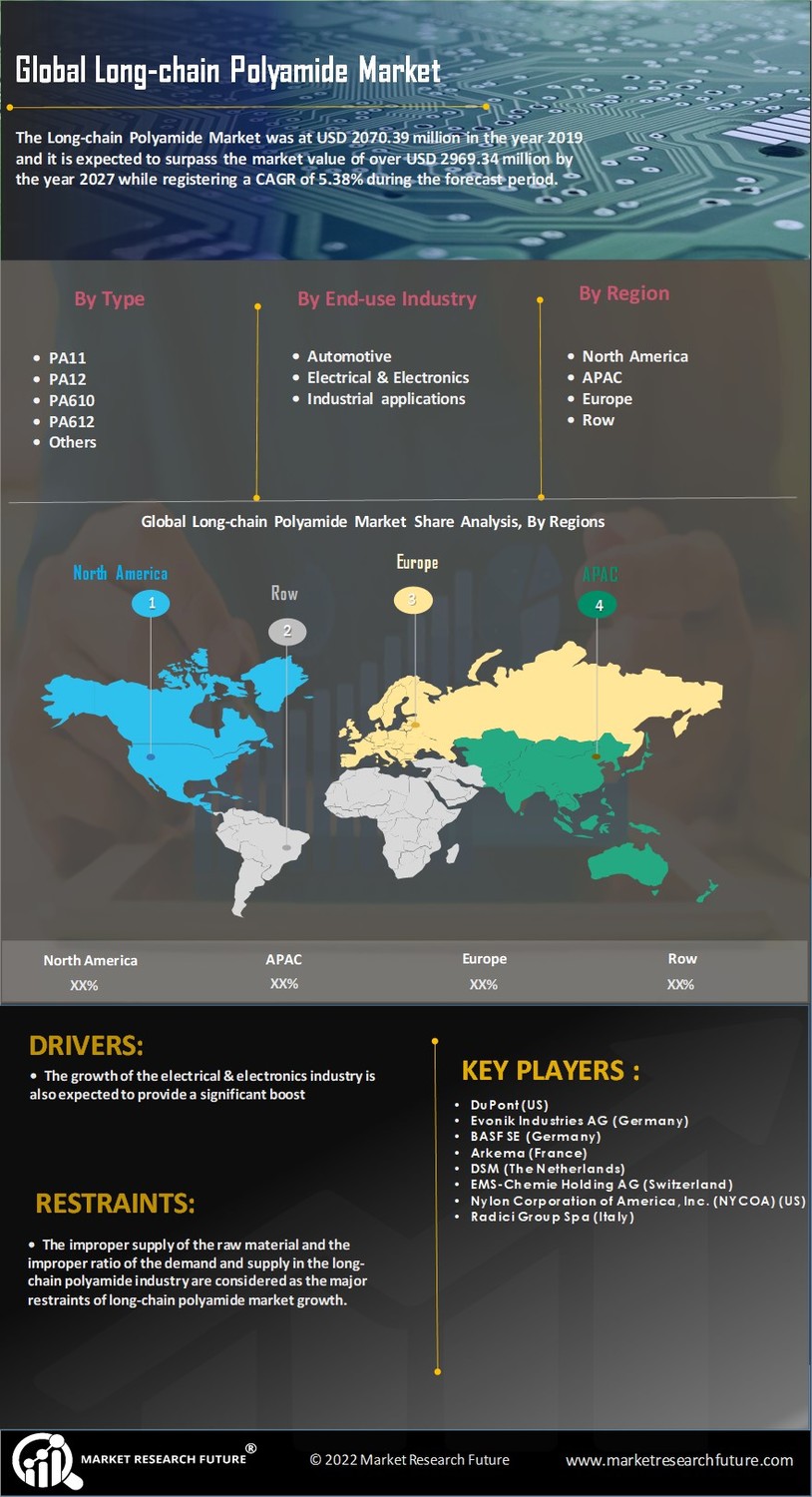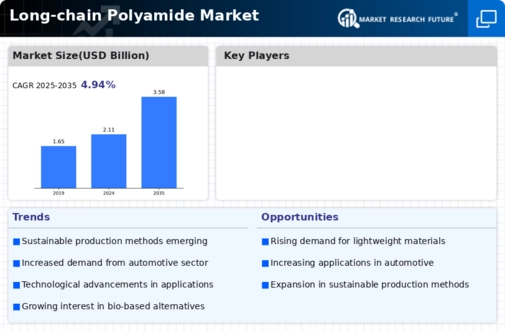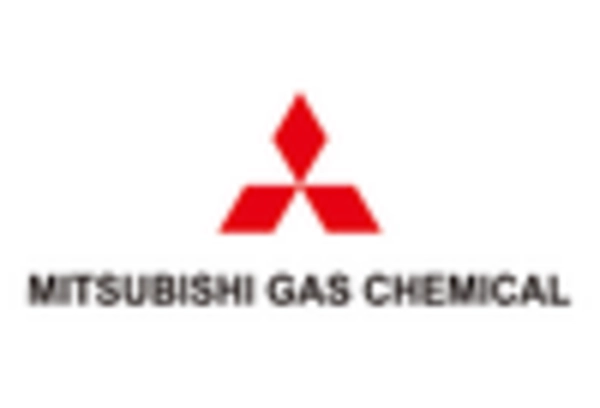Leading market players are investing heavily in research and development in order to expand their product lines, which will help the Long-chain Polyamide Market, grow even more. Market participants are also undertaking a variety of strategic activities to expand their footprint, with important market developments including new product launches, contractual agreements, mergers and acquisitions, higher investments, and collaboration with other organizations. To expand and survive in a more competitive and rising market climate, Long-chain Polyamide industry must offer cost-effective items.
Manufacturing locally to minimize operational costs is one of the key business tactics used by manufacturers in the Long-chain Polyamide industry to benefit clients and increase the market sector. In recent years, the Long-chain Polyamide industry has offered some of the most significant advantages to medicine. Major players in the Long-chain Polyamide Market, including DuPont, Evonik Industries AG, BASF SE, Arkema, DSM, EMS-Chemie Holding AG, Nylon Corporation of America, Inc., and Radici Group Spa, are attempting to increase market demand by investing in research and development operations.
Specialty chemical firm Evonik Industries AG (Evonik), a division of RAG-Stiftung. Surfactants, polymers, resins, additives, among other things, are included in its product line. Agriculture, alternative energy, paper and printing, metal and oil products, electrical and electronics, food and animal feed, pharmaceuticals, plastics and rubber, automotive, and construction are just a few of the industries where the company's products are used. Additionally, it provides engineering, logistics, utilities, and process technology services. Major production facilities for Evonik are located in China, Singapore, Belgium, the US, and Germany.
In addition to other places, the corporation also operates in North America, Asia-Pacific, Africa, South America, and Europe. Essen, in Nordrhein-Westfalen, Germany, serves as the headquarters for Evonik. Evonik unveiled a unique polyamide powder in February 2019 that is intended specifically for 3D printing applications, even at higher temperatures. Some of the important characteristics of this advancement include its superior chemical and temperature resistance and increased mechanical strength.
BASF SE (BASF) is a company that produces chemicals. It manufactures, markets, and sells chemicals, polymers, crop protection products, and performance items. Solvents, fuel additives, electronic chemicals, pigments, paints, food additives, adhesives, surfactants, fungicides, and herbicides are among the company's product offerings. Construction, agricultural, electronics and electrical, furniture and wood, paints and coatings, automotive, home care, chemicals, nutrition, and other industries are among the many that the company serves. R&D is conducted by BASF in collaboration with international clients, partners, and scientists. A network of production sites supports the company's operations.
It is present throughout North America, Europe, South America, Asia Pacific, Africa, and the Middle East. The headquarters of BASF are in Ludwigshafen, Germany. A bio-sourced 3-D printing substance with Nylon PA11 as its foundation was recently unveiled by BASF and Sculpteo. The following 4 printing products were introduced by the company:
Ultrasint PA11
PA 11 CF
PA 11 MJF
Ultrasint PA 11 ESD


















Leave a Comment